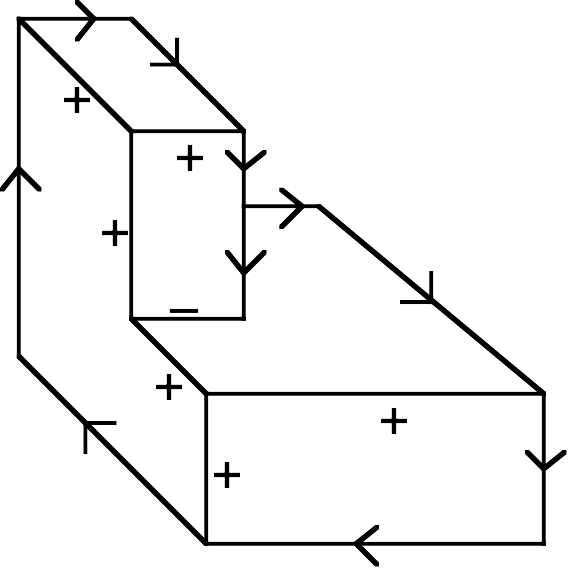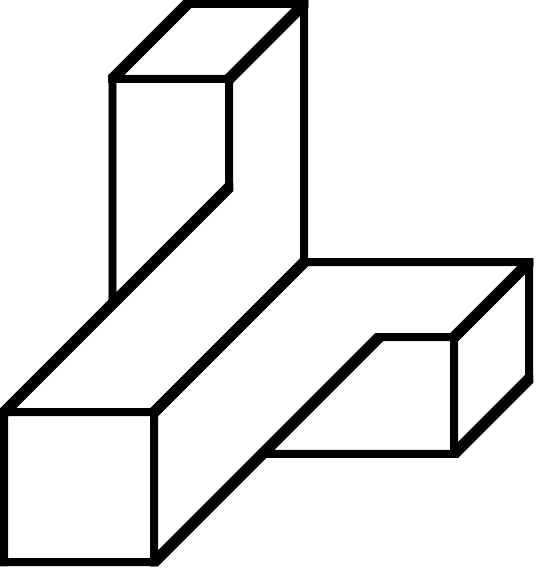A geometric constraint is a form of constraint of an image that is driven by knowledge of 2D and 3D geometry. For example:
- As a general rule if object A is in front of object B and object B is in front of object C, then A must also be in front of C.
- Waltz's algorithm uses the fact that, inter alia, if three edges meet at a Y-like point they are usually either all be outward facing or all inward facing joins.
- Shadows tend to lie on the same side of objects and opposite to the primary light source.
As is evident from the phrases 'as a general rule', 'usually', 'tend to', there are often odd examples where the particular camera angle or strangely shaped objects break the 'rules', so they are often strong heuristics rather than inviolable laws.
Used in Chap. 12: page 179

Scene with edges labelled by Waltz' algorithm using on vertex constriants

An 'improper scene', which cannot be labelled by Walz' algorithm as it appears to violate geometric constraints. Note however if the L-shaped faces where suitably curved it would be possible to construct this.